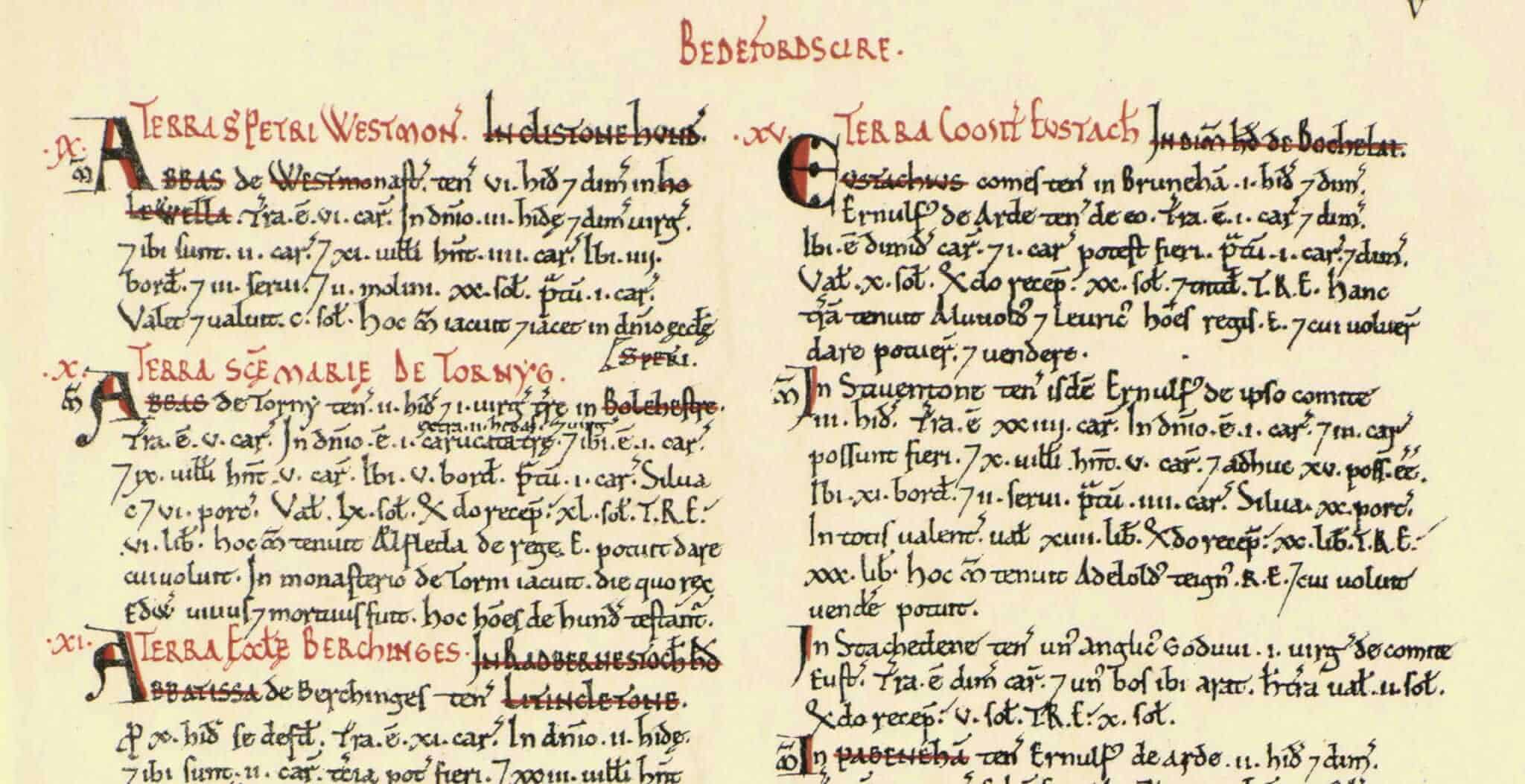The Domesday Book Could Best Be Described as
Unlike the modern census records the Domesday Book was designed not to count the numbers of the population. Domesday Book compiled in 1086 at the behest of William the Conqueror has been described as the most valuable piece of antiquity possessed by any nation David Hume and viewed by historians as the final act of the Norman conquest.
It was undertaken with astonishing rapidity in 1086.

. Duke William of Normandy may have just won the most recent battle in the area but he has mislaid something precious. He carefully assembles a team for a secret mission of recovery the assembly is. The Domesday Book was commissioned at Christmas 1085 by William I usually known as William the Conqueror.
Domesday Book the original record or summary of William Is survey of England. This led the book to be compared to the Last Judgement or Doomsday described in the Bible when the deeds of Christians written in the Book of Life were to be placed before God for judgement. The survey in the scope of its detail and the speed of.
Worth in Domesday Book. Its a record of a survey of English properties their landlords who their superiors were the number and type of residents livestock ploughs mills etc tax assessments and rental valuations. All land was ultimately owned by the Crown but held by lords who provided military resources or tax in return.
The Domesday Book is one of the most renowned respected and revered public records ever to have been published. Of the detailed registrations of tenants defendants livestock etc as well as of contemporary social features. Situated in Sowerby which is closely linked to Thirsk and known as Soreb in the.
Inevitably given the Norman kings love of hunting the land around Mansfield and Edwinstowe became part of a royal forest. By contemporaries the whole operation was known as the description of England but the popular name Domesdayie doomsday when men face the record from which there is no appealwas in general use by the mid-12th century. What was the primary preoccupation of scholasticism.
The Domesday book was created around 20 years after the Battle of Hastings when William I demanded information about the ownership status of the country he was now ruling. William needed to raise taxes to pay for his army and by knowing the wealth of his subjects he could then raise money from the wealthy ones. The Domesday Book contains a record of the ownership extent and value of the lands of England at the time of the survey at the time of their bestowal when granted by the King and at the time of a previous survey under Edward the Confessor.
The complete Domesday Book is published in this Library Edition as a perfect facsimile and translation for public and private libraries book collectors and history lovers. Associated with the reign of William the Conqueror the Domesday book was created to provide the king with a means of maintaining control over Medieval England. A ploughland terra carucis or carucata was the area that could be ploughed by eight oxen in a yearGenerally around 120 acres though.
Twenty years later there was even less land being cultivated. Domesday carefully records the owners of each manor estate in 1086 as these were the people liable for tax. The Domesday Book could best be described as what.
But more it is here you will find classic pub grub a restaurant where youll be spoiled for choice and all around the friendliest atmosphere you could imagine. It is also the oldest public record to have survived through the ages. The name Domesday Book was not adopted until the late 12th Century.
Domesday Book compiled in 1086 at the behest of William the Conqueror has been described as the most valuable piece of antiquity possessed by. The Domesday Book of 1086 records the church a priest and four bordars these were essentially slaves working the priests land. The Domesday Book is actually not one book but two.
It was sometimes termed Rotulus Wintoniae and was the book from which judgment was to be given upon the value tenures and services of the lands therein described. The Crown and Anchor pub can best be described as built of brick cosy and offering real ales and well kept wines. The Domesday Book No Not That One The time in Hastings England is 1066 precisely.
The Complete Edition is produced in both Great Domesday and Little Domesday sets and it is also possible to become the owner of the entire collection. Arable land was recorded in different units including. Domesday Book The register of the lands of England framed by order of William the Conqueror.
There was nothing quite lik. A census of land ownership. The revival of trade during the High Middle Ages was primarily centered on what region.
Answer 1 of 10. The reconciliation of faith with reason. It was instead designed to record the ownership of land and.
It was to be a survey of the wealth and assets of his kingdom and the survey covered most of England. The main landholders listed in Domesday Book. Either King William himself or one of around 1400 people who held land directly from the.
Domesday Book ˈduːmzdeɪ the Middle English spelling of Doomsday Book is a manuscript record of the Great Survey of much of England and parts of Wales completed in 1086 by order of William I known as William the Conqueror1 Domesday has long been associated with the Latin phrase Domus. Something so precious no one must even know it is missing.
What Effect Did The Norman Conquest Have Domesday Book William The Conqueror Medieval History
Aug 1 1085 King William The Conqueror Received The Results Of The Domesday Survey William Had Sent Commissioners Out Domesday Book British History History
Comments
Post a Comment